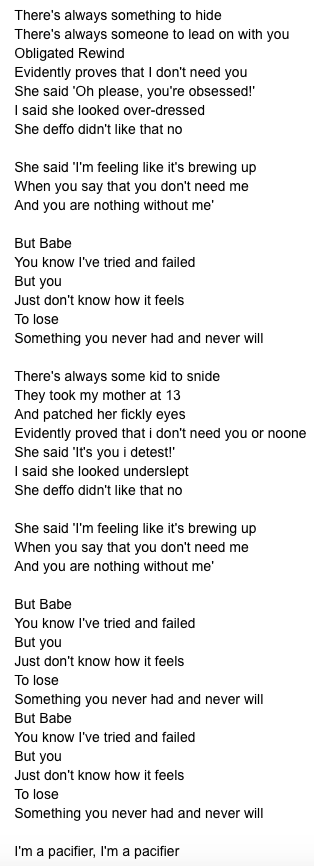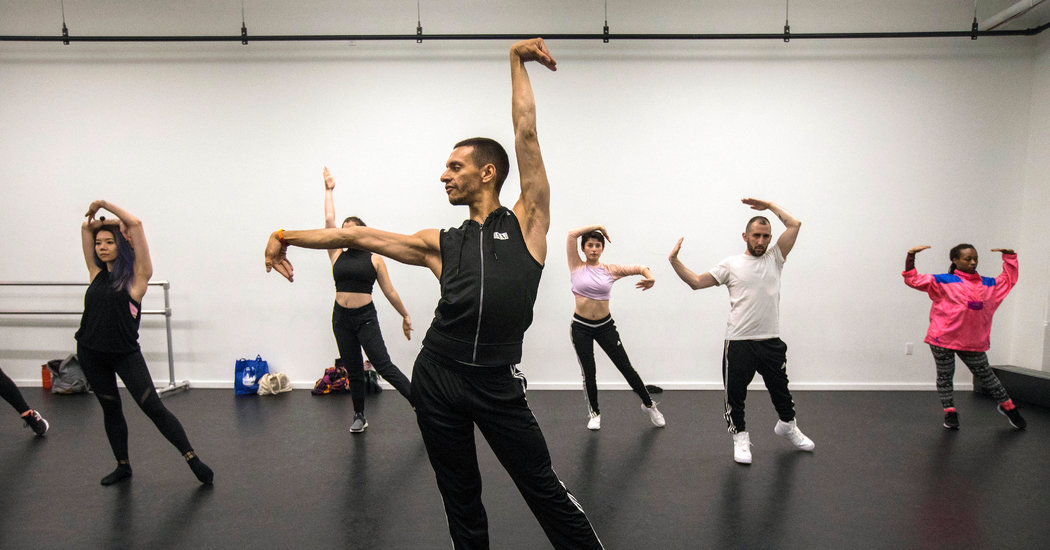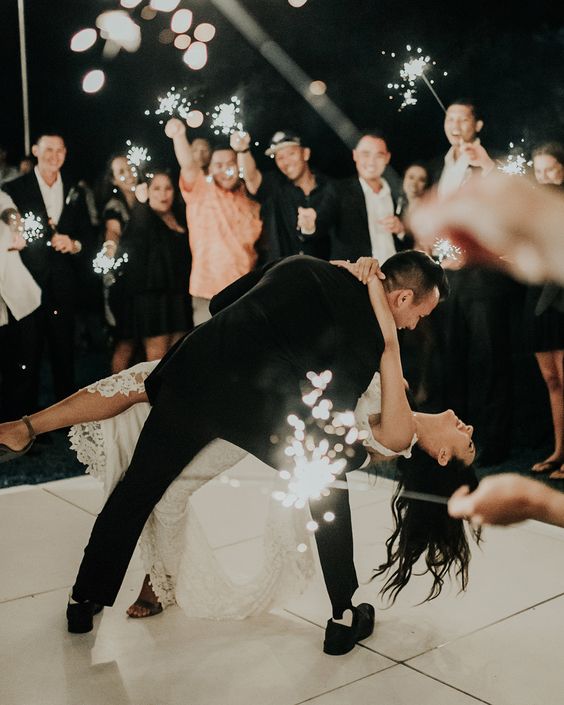How do bees communicate by dancing
|
Bee Waggle Dance
Introduction
How to Play
Play Game
Menu
Waggle dance | Round dance | Flowers
Overview
Teamwork
Bees in a colony work with each other to gather food. They try to find the most pollen and nectar in the least amount of time possible.
Finding the best flowers
Some flowers have more pollen and nectar than others. When a good flower patch is found, bees recruit other bees from their colony to the patch. But how do they tell those bees where to find the best flowers?
Communication
Bees communicate flower location using special dances inside the hive. One bee dances, while other bees watch to learn the directions to a specific flower patch. The dancing bee smells like the flower patch, and also gives the watching bees a taste of the nectar she gathered.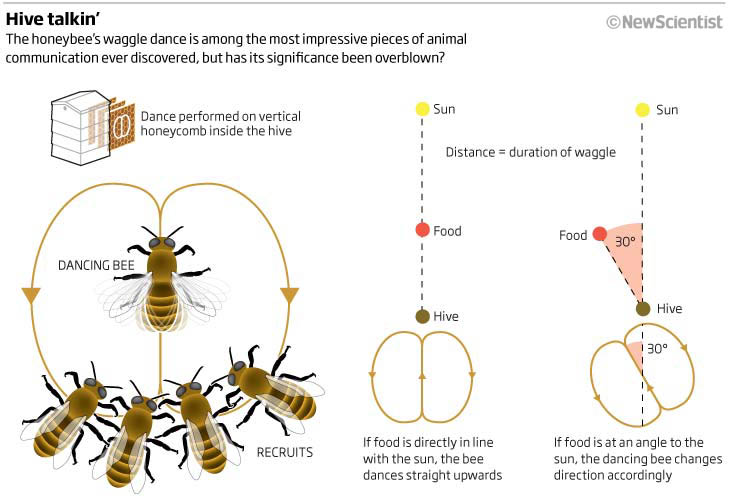 Smell and taste helps other bees find the correct flower patch.
Smell and taste helps other bees find the correct flower patch.
Bees use two different kinds of dances to communicate information: the waggle dance and the circle dance. Read more about the two different dances below.
Waggle dance
The waggle dance tells the watching bees two things about a flower patch’s location: the distance and the direction away from the hive. Let’s take a closer look at how this works.
Distance
The dancing bee waggles back and forth as she moves forward in a straight line, then circles around to repeat the dance. The length of the middle line, called the waggle run, shows roughly how far it is to the flower patch. Which dance below tells the watching bees that the flower patch is farther from the hive? If you guessed the dance on the left, you are correct!
Direction
Bees know which way is up and which way is down inside their hive, and they use this to show direction.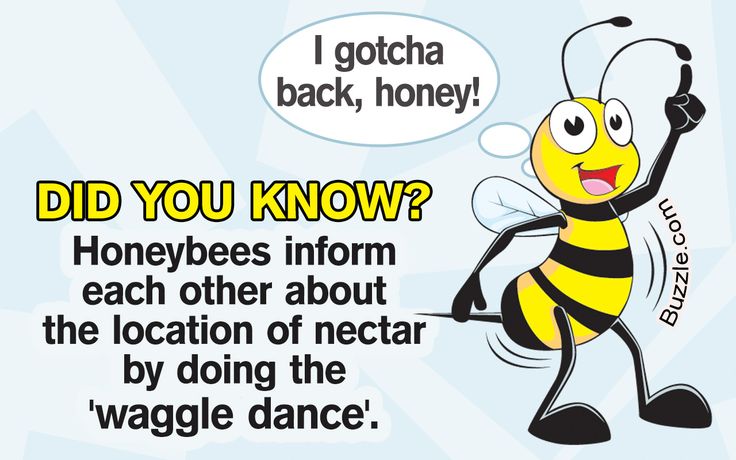 How? Bees dance with the waggle run at a specific angle away from straight up. Outside the hive, bees look at the position of the sun, and fly at the same angle away from the sun.
How? Bees dance with the waggle run at a specific angle away from straight up. Outside the hive, bees look at the position of the sun, and fly at the same angle away from the sun.
If the sun were in a different position, the angle would stay the same, but the direction to the correct flower patch would be different.
Round dance
The round dance tells the watching bees only one thing about the flower patch’s location: that it is somewhere close to the hive. This dance does not include a waggle run, or any information about the direction of the flower patch.
In this dance, the bee walks in a circle, turns around, then walks the same circle in the opposite direction. She repeats this many times. Sometimes, the bee includes a little waggle as she’s turning around. The duration of this waggle is thought to indicate the quality of the flower patch she has found.
Finding the best flowers
Honey bee colonies collect two main resources from flowers: nectar and pollen.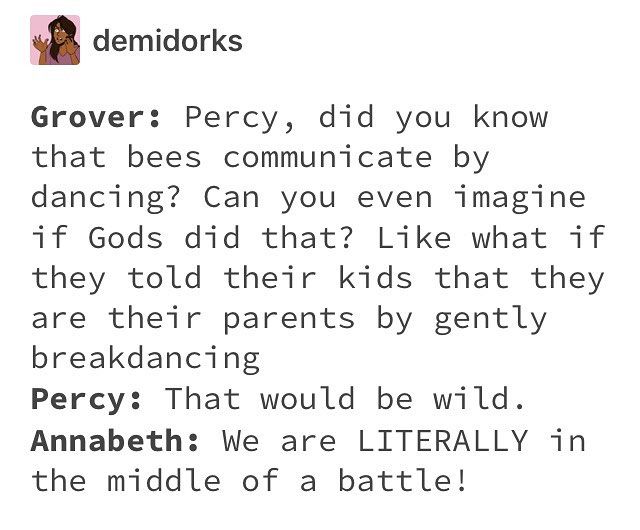 Their goal is to find the flowers with the most of these two resources.
Their goal is to find the flowers with the most of these two resources.
Individual bees do two things when searching for flowers to get the most resources. First, they specialize to collect one resource at a time: either nectar or pollen. Specializing and focusing on one resource at a time helps bees more easily recognize the best flowers.
Second, bees look for and remember which flower species is the most rewarding. This can change over time. A species of flower that had the most nectar one month might not be the species with the most nectar the next month, for example.
Once a bee finds a good flower, she collects resources and returns to the hive, and dances to tell other members of her colony where to find the flower so they can go and collect more resources from it. To motivate other bees to find the correct flower patch, the dancing bee shares a sample of nectar she collected with them. She does this by regurgitating a sample of the nectar that was stored in her honey stomach for them to taste.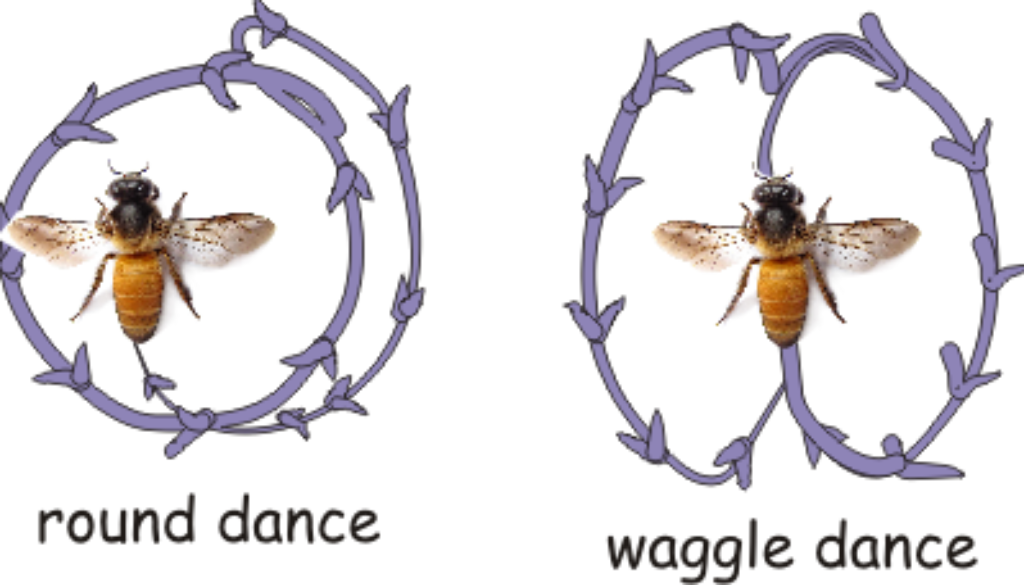 These watchers also smell the scent of the flower on the dancing bees’s hind end. These clues help the watching bees locate the correct flower patch outside the hive.
These watchers also smell the scent of the flower on the dancing bees’s hind end. These clues help the watching bees locate the correct flower patch outside the hive.
What do bees see?
Bees see the world quite differently from you or me. One difference is that bees have difficulty distinguishing red colors. However, what they can’t see in the red they make up for in the blues, greens, and purples. Bees can even see colors we cannot. Bees can see the ultra violet light we use sunblock to protect our skin from. Seeing ultra violet light helps bees see secret patterns flowers display to show where their nectar is hidden.
Introduction
How to Play
Play Game
Menu
The language of bees - PanARMENIAN.Net
PanARMENIAN.Net - The language of nature is infinitely diverse: it can be chemical, electromagnetic, sound, light, body language, etc.
Over the past decades, scientists have managed to decipher enough languages to understand the whole complexity of the evolutionary diversity of communication in nature.
So, in the 20s. of the last century, the German zoologist Karl Frisch discovered the language of bees.
The very fact of the ability of bees to transmit information about the place of mass flowering and the presence of stereotypical repetitive movements in scout bees was recorded as early as 1788, but Frisch was the first to study this phenomenon precisely as a language. It is the language of sounds, gestures, smells.
It turns out that bees communicate through specific intricate gestures and dance-like movements. With such peculiar dances, for example, a scout bee can inform its relatives about the nearest clearing full of nectar flowers, the distance and direction to it.
A scout bee, having found a flowering field, pushes into the combs of her friends, informs them about the find, and in a strong excitement begins to dance - to wag the tip of her abdomen in different directions. The closer the location of the find from the hive, the more active its movement.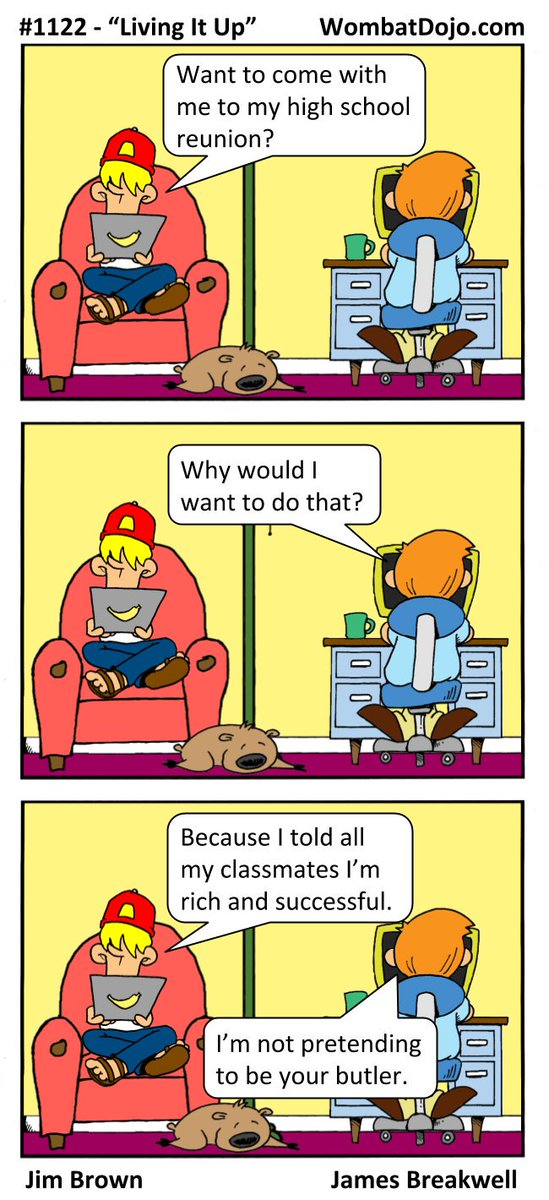 While dancing, she takes several steps in a certain direction in a straight line, turns sharply to the side, then repeats the dance again - and so on up to 20 times.
While dancing, she takes several steps in a certain direction in a straight line, turns sharply to the side, then repeats the dance again - and so on up to 20 times.
In the complete darkness of the hive, the friends would not see the scout's dance, but they touch her with their antennae and repeat it, and after several repetitions they fly to the indicated place. They determine the distance to it by the rhythm of the dance, by the time the figures are performed, and this time is measured with phenomenal accuracy - up to 0.01 seconds. The dancer registers the beginning and end of the figure with the buzz of wings.
The scout bee indicates the location of the feeding area with great accuracy and orients itself according to the sun. If the site is towards the sun, then, dancing, it moves from top to bottom, in the direction from the sun - from bottom to top, in other directions it makes any angle between the position of the sun and the food source. The value of the angle, determined by the facets of the eyes, surprisingly transposes (transfers) to the force of gravity, which the bees perfectly distinguish.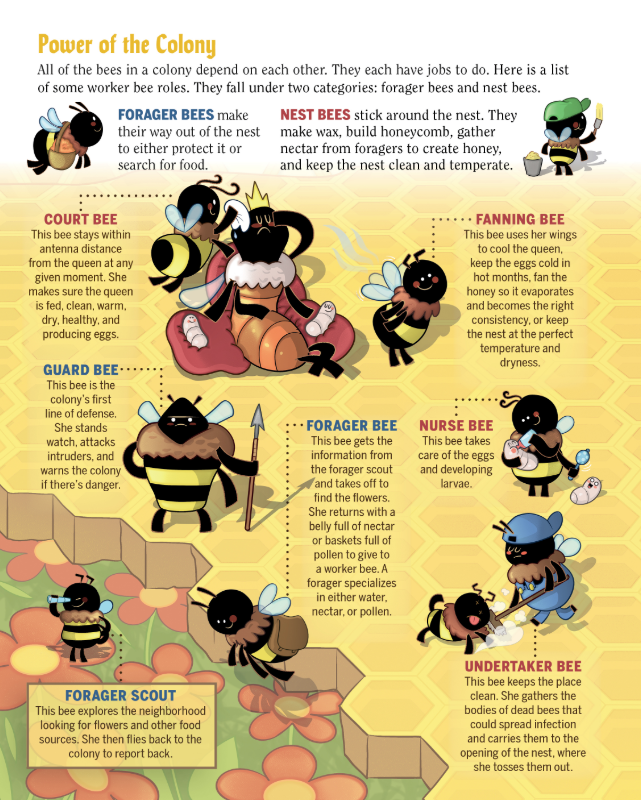 On horizontally lying honeycombs, no transposition is needed. The bee simply indicates the direction of the food source. If you turn the honeycomb without changing the horizontal plane, then it, like a magnetic compass needle, turns to the found food. The distance to the source of food, not more than 100 m, is not given by the scout at all, but only its presence is indicated. What plants are found, the bees recognize by the aromas that she brought on her body. When flying over 100 m, not only distances and directions are signaled, but also the strength of the headwind, side or tailwind. For this factor, as well as for others that hinder or facilitate flight, corrections are given in the messages of the bees - the distance either lengthens or shortens, depending on what difficulties will have to be overcome on the way. From a biological point of view, this is quite understandable: it is important for bees to know how much time and effort it will take to achieve the goal. And their biological clock works excellently.
On horizontally lying honeycombs, no transposition is needed. The bee simply indicates the direction of the food source. If you turn the honeycomb without changing the horizontal plane, then it, like a magnetic compass needle, turns to the found food. The distance to the source of food, not more than 100 m, is not given by the scout at all, but only its presence is indicated. What plants are found, the bees recognize by the aromas that she brought on her body. When flying over 100 m, not only distances and directions are signaled, but also the strength of the headwind, side or tailwind. For this factor, as well as for others that hinder or facilitate flight, corrections are given in the messages of the bees - the distance either lengthens or shortens, depending on what difficulties will have to be overcome on the way. From a biological point of view, this is quite understandable: it is important for bees to know how much time and effort it will take to achieve the goal. And their biological clock works excellently.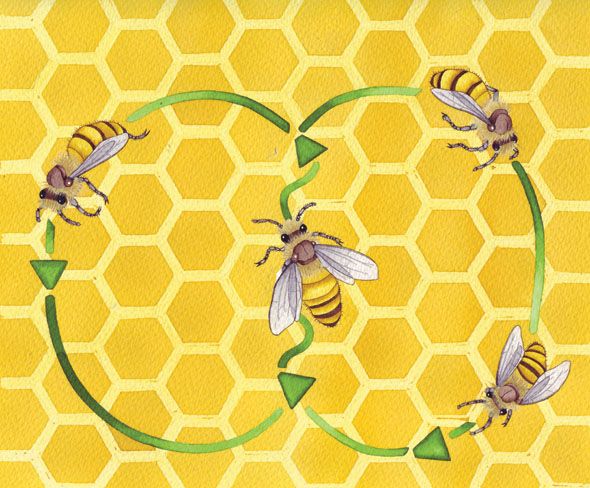
It is interesting that the bees not only adhere to the indicated course exactly, but also orient themselves according to the height of the sun, even if it is covered by clouds. This mysterious phenomenon is due to the fact that bees are guided by ultraviolet and naturally polarized light. Ultraviolet rays, as Karl Frisch (1959) proved, penetrate even through a continuous cloud cover, and polarized light, whose waves oscillate in one plane, breaks through the smallest gaps in the clouds. The eye of a bee, consisting of five thousand facets, plays the role of an analyzer. Having such a wonderful optical device, the bee determines the position of the sun on the horizon from any part of the clear sky. A person can do this only with the help of instruments.
In addition to the daytime celestial body, bees also use simpler indicators as reference points: terrain, smells, various objects and their color. A bee will certainly make a mistake and fly into a nearby alien hive if it is painted in the appropriate color.
The bees also need dancing tongue during swarming. Before you leave the habitable shelter, you need to pick up a new one with all the amenities and then move on. The new house should have sufficient living space, water should not penetrate into it and the wind should not blow, it should smell good and there should be no ants - unnecessary roommates. In search of housing in different directions, a whole brigade of bees flies out. They carefully inspect every hollow in a tree, a hole in a wall, and even a birdhouse. Each scout reports the results of the survey to the hive with her dances. Since the matter is very important, the dances do not last one or two minutes, as in the collection of nectar, but for hours (sometimes for twenty hours in a row).
During this hours-long performance of the scout in the darkness of the hive, the sun will travel a long way across the sky. It would seem that the angle between the position of the sun on the horizon and the direction to the new home where the bee is pointing should change dramatically, and its message no longer has any value. But this does not happen. The internal biological clock, with an accuracy of one hundredth of a second, tells the bee how much time has passed since it flew up to the hive and at what angle the sun has moved during this time.
But this does not happen. The internal biological clock, with an accuracy of one hundredth of a second, tells the bee how much time has passed since it flew up to the hive and at what angle the sun has moved during this time.
As shown by long-term observations, the scout bee, dancing the azimuth of the direction, continuously changes direction in strict accordance with the movement of the sun.
It should be noted that Frisch's discovery was by no means unconditionally recognized. In the 1960s and 1970s, there was a heated discussion about whether bees really transmit information using a remote guidance system that includes abstract symbols, or whether they use odorous substances in any form. It has been suggested that the ideal solution to this dispute would be the results of a robotic bee, a model made to perform the dance under human control.
In 1992, scientists from Denmark created a robotic bee, trained in all the movements of the "dance" of the language of communication, which were described by the zoologist Carl von Frisch.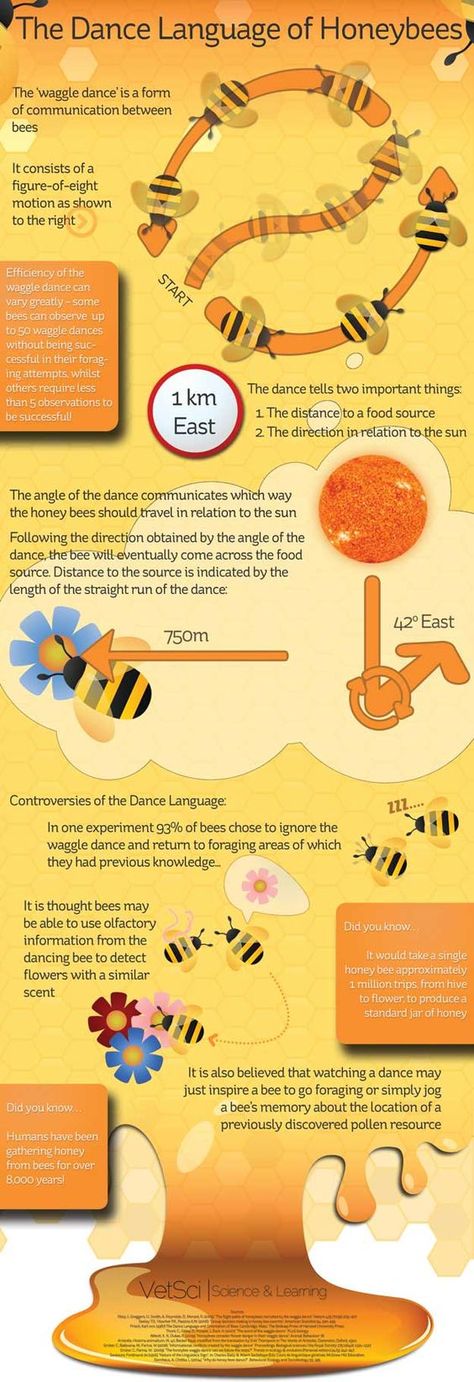 And what is surprising, the real insects watching the "dancing" of the robot bee flew to the exact place that was indicated in the descriptions of the Australian zoologist, who unraveled the language of these amazing insects. Thus, the very fact of the use of the “language of dances” by bees was confirmed. The decoding of this language has not yet been completed. New research in this area brings interesting results, but they also raise new questions.
And what is surprising, the real insects watching the "dancing" of the robot bee flew to the exact place that was indicated in the descriptions of the Australian zoologist, who unraveled the language of these amazing insects. Thus, the very fact of the use of the “language of dances” by bees was confirmed. The decoding of this language has not yet been completed. New research in this area brings interesting results, but they also raise new questions.
How do bees communicate with each other? | Animals
If you think that representatives of the insect world, in particular bees, are deprived of the opportunity to communicate with each other and transmit important information to them, then you are deeply mistaken.
Thanks to research on this issue, which were carried out by K. Frisch for 60 years, it was found that bee speech is not an invention.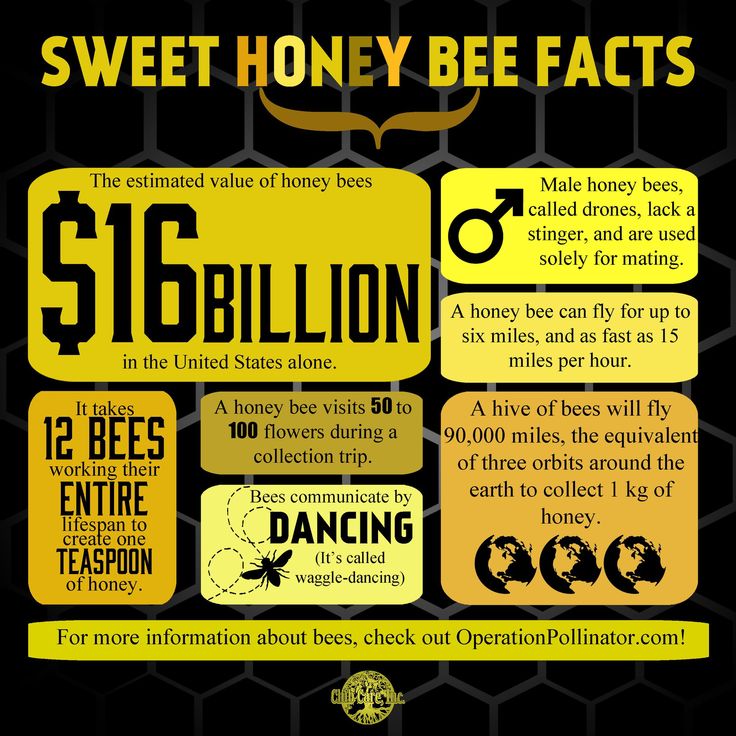 It really exists! The researcher even managed to study in detail the mechanisms of action of bee speech.
It really exists! The researcher even managed to study in detail the mechanisms of action of bee speech.
The study of the possibility of these striped insects transmitting information to their fellows was started as early as 1923.
Bees transmit information by dancing
Photo: Depositphotos
K. Frisch managed to establish that the bee communicates important information about honey plants, their location, the direction in which they should be sought ... through dance! Returning to the hive with this precious information, she dances to mobilize the bee colony to collect nectar.
The researcher described several varieties of bee dances. They are circular and waving.
- In the circle, the bee moves, drawing a figure eight in the air. The striped worker first describes the circle in one direction, and then repeats it in the opposite direction.
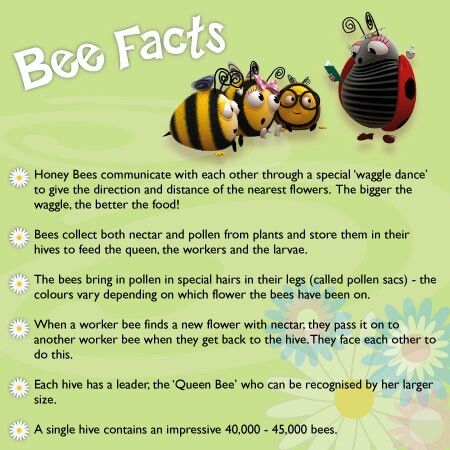 With such a dance, she notifies her relatives that they will need to overcome no more than a hundred meters to the location of the source of nectar.
With such a dance, she notifies her relatives that they will need to overcome no more than a hundred meters to the location of the source of nectar. - If a bee flies up to the hive, wagging its abdomen, describing a semicircle in the air and then moving in a straight line, this means that the source of food is far away. The farther it is located, the longer the run in a straight line and the smaller the number of figures of one cycle of the bee dance.
The information that the striped toiler conveys while dancing is very important for the bee colony. Young bees follow the bee-informer, trying to get in touch with it with the help of antennae. This is done in order to determine what kind of food in question. They capture the subtle aroma of the plant from which the nectar was collected.
Having learned through such dances about the location and type of honey plants, the bee brethren together go to the place, which, according to information received from the informant bee, is a rich source of food.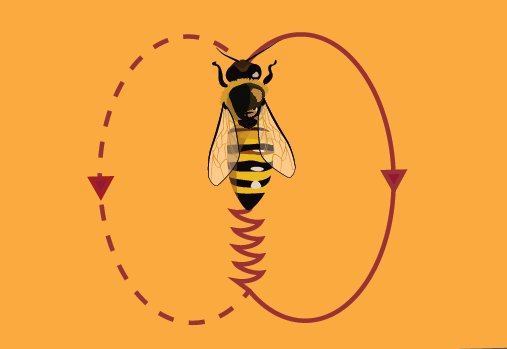
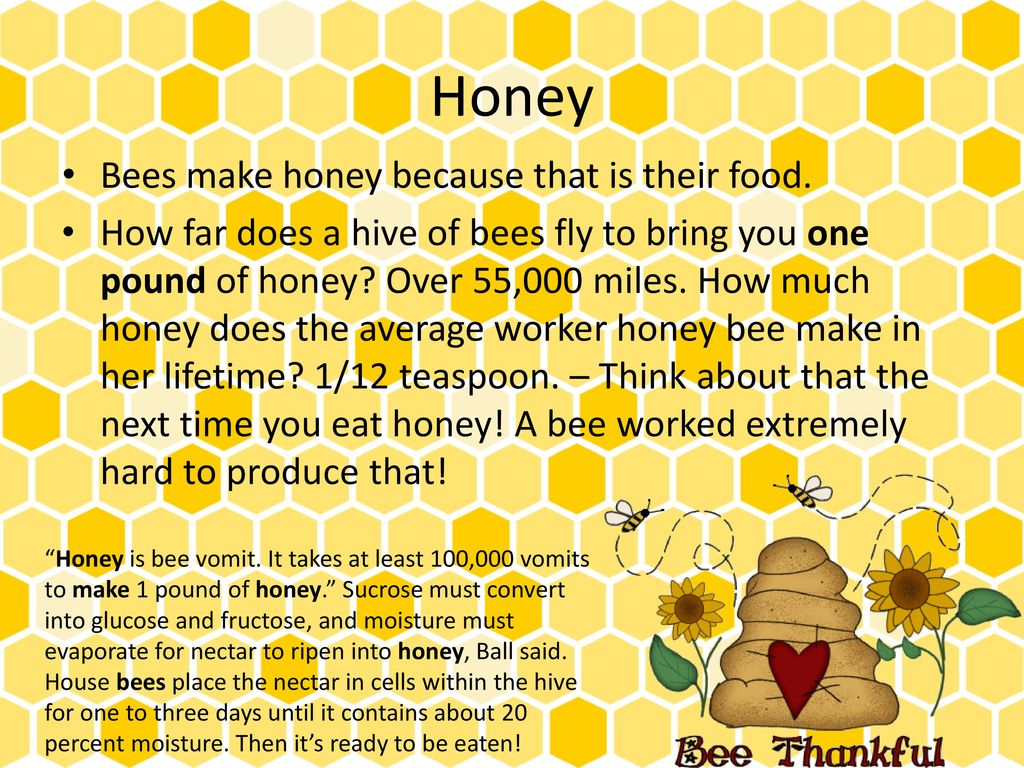 In other words, if the source lies in the exact direction of the sun, the bee will walk facing exactly straight up (remember that a hive hangs vertically). If it lies 20 degrees to the right of that imaginary line to the sun, the angle of the bee's walk will be 20 degrees to the right of vertical. Finally, the dancer shares the odor of the flowers in question with the other bees, who sample it with their antennae.
In other words, if the source lies in the exact direction of the sun, the bee will walk facing exactly straight up (remember that a hive hangs vertically). If it lies 20 degrees to the right of that imaginary line to the sun, the angle of the bee's walk will be 20 degrees to the right of vertical. Finally, the dancer shares the odor of the flowers in question with the other bees, who sample it with their antennae. 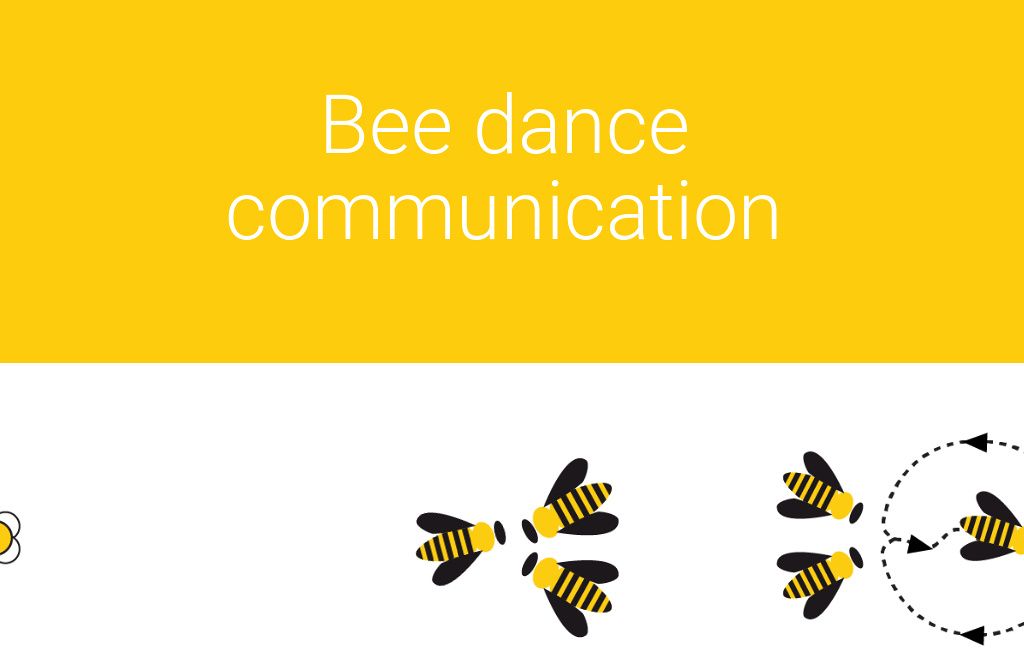
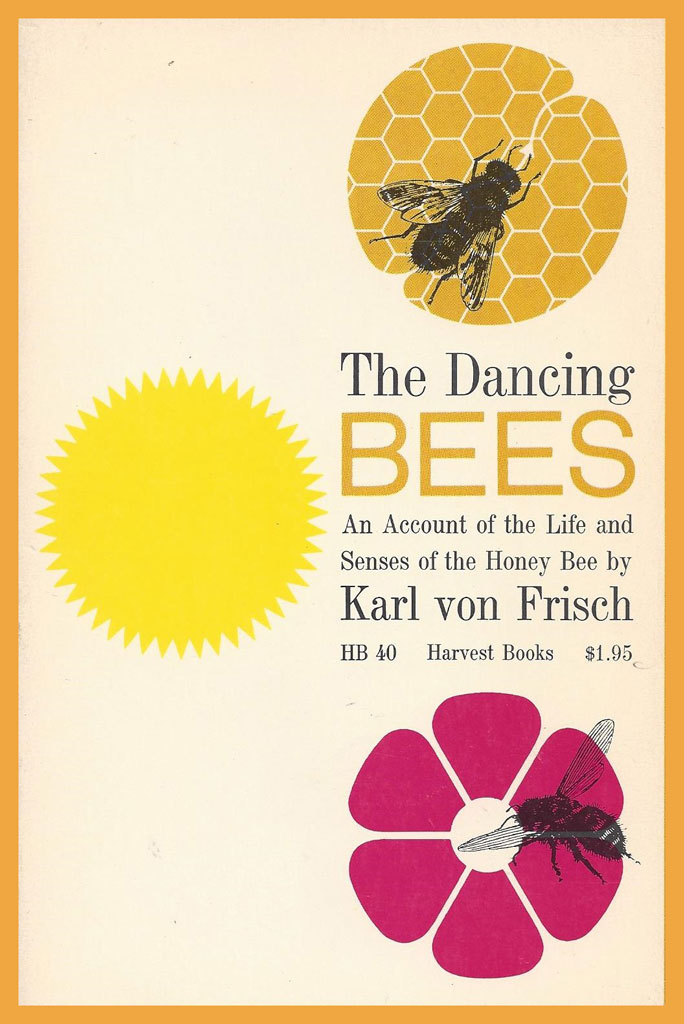 Lasting sometimes more than an hour, the tremble dance stimulates additional bees to begin processing nectar.
Lasting sometimes more than an hour, the tremble dance stimulates additional bees to begin processing nectar. 